-
Posts
433 -
Joined
-
Last visited
-
Days Won
3
Content Type
Profiles
Forums
Resource Library
Events
Gallery
Blogs
Store
Community Map
Posts posted by Lambeg man
-
-
Fascinating picture JHB, a somewhat unique view from the signal cabin. What is interesting is the loading gauge in the foreground. This is presumably the 'exit' road for departing goods trains, hence the position of the gauge. This indicates that the four sidings to the rear (just right of the picture centre) would have been the departure 'marshalling' sidings for this depot. York Road never had (or ever had need of) an equivalent to the 'Adelaide Marshalling Yard', which prior to the 1933 strike, all goods wagons to and from both Grosvenor Road and Maysfields/Docks were 'tripped', departing goods trains being assembled here and arriving goods trains being broken up.
-
 1
1
-
-
Many thanks for posting that MM. Just spent most of my evening watching many of his other you-tube posts. Very entertaining and sometimes down right comical moments. "Was something a good idea?" followed by a pop up of Trump!!!
-
1 hour ago, jhb171achill said:
the Mogul had "U T" on its tender
1 hour ago, jhb171achill said:In any event, these liveries were repainted apparently after only some weeks, to standard UTA black lined in red & straw
Hi JHB,
Surely if No. 90 was repainted in the 'green' livery (surely the jury is out on what the actual 'green' was) in 1948, it was in this livery for more than a "some weeks".
The photo of the tender below was allegedly taken in 1950.
 1 hour ago, StevieB said:
1 hour ago, StevieB said:Am I right in thinking that the UTA had to buy the NCC from the railway executive?
The Northern Ireland government paid the Railway Executive £2,668.00 for the NCC system.
25 minutes ago, Dunluce Castle said:What shade? I'm unsure, so I felt that a dark olive green colour would suit best and applied the letters "UT" as they were seen on some engines during the early years of the UTA.
Irrespective of the shade of green, still a cracking model DC.
-
With regard to Dunluce Castle's model, there is a colour photograph in "Steam Locomotives of the UTA" of No. 90 in the 'experimental green ' livery. It is dated 1950.
I quote from "NCC Saga":
So in August 1948 the first 2-6-4 tank to be overhauled, 5, was given a coat of apple green. A month later the first mogul, 90, appeared in a similar shade...... and finally 80, pride of Larne shed, was turned out in olive green, lined out in yellow and red.
In the photograph No. 90 has no lettering or crest on the tender, which is not surprising as the NCC at this time was not yet part of the UTA. I would therefore suggest that the other two engines would equally have had no lettering or crest on their tenders. 'Mac' Arnold suggests these experiments with a form of 'green' livery was due to the NIRTB having green buses and that the UTA was simply an extension of the road company. However in August 1948 the NCC was actually part of the Railway Executive (British Railways) and I would suggest that the green liveries were applied to these 3 locomotives as this was the primary colour that British Railways had adopted, I think I am correct in saying, about the same time for their express passenger locomotives. However I have no hard factual record that this was the case.
-
 2
2
-
-
Ernie,
With that last picture by J. Dewing, you have made an old man very happy. It is not an 'Enterprise' but one of the Belfast-Dublin stoppers which No. 131 would have taken over at Dundalk. Assuming from the shadows this train is arriving late morning, then it must be the 08.15 Belfast-Dublin service. The carriage behind the engine is a 'C 2' All-First, then the 'B 1' Dining car No. 402 (GNR number), then a 'K 15' open second (probably tabled as a support vehicle for the diner) and then five older wooden bodied carriages. Perhaps someone else will comment as to whether 8 carriages on this working was the weekday norm in 1959 or whether this is a Saturday working?
I note from previously published photographs credited to John Dewing that he was in Amiens Street station on Saturday 16th May 1959.
-
 2
2
-
-
Thanks JHB, got it now. What a strange looking beast. Is that a door in the middle of the front panel? The bogies appear a tad flimsy as well.
-
Is it just me? Clicked on the picture link and got - The file you were looking for could not be found
-
Well said JHB.
One of my personal bugbears over the years has been the endless repetition in various publications and books that "RPSI coach No. 9 was a steam hauled coach that was adapted to be a Railcar Trailer and is now a steam hauled coach again" or words similar. No. 9 was specifically built as a Railcar Trailer. A few years back I even had to correct the in formation about this carriage on the RPSI website!
The need for accuracy when recording events, dates and places is paramount given the frequent occurrence of plain and obvious mistakes that are consequently repeated by authors accepting one instance of a report as true. Over the years I have copied the corrections made in the 'Book Reviews' in the Journal or in Five Foot Three onto paper slips that I then place in the relevant page of the said book. To be fair, many are typo's, but many are the same incorrect guff repeated even by some recent authors.
Rant over, feeling better now........................
-
 1
1
-
-
3 hours ago, Galteemore said:
Nice find Galteemore....... even if the "thoroughly researched" captions leave a bit to be desired.......
-
 1
1
-
-
Thanks for posting that informative text JHB. I think it helps us all understand what you're up against in trying to make sense of some of the material.
In fact I would go further on this post to ask every member of this site who has enjoyed Jon's postings on this thread over the last 3 or 4 weeks to click a 'like' against the above post as a recognition to JHB for the sheer entertainment he has provided throughout these recent 'locked in' days. He has not cured CV-19 but he has helped a lot of us through these dark days by his publishing efforts.
-
 3
3
-
-
26 minutes ago, airfixfan said:
In the wrong road because coaches are being pushed into long siding other side of bridge once loco runs round?
Possibly, but that assumes the locomotive would be approaching the camera if it is running around? Unless Jon finds a note to accompany this picture, no one can be 100% what exactly is going on here. That said the exchange of ideas on this matter has been VERY informative and in many ways very entertaining in these otherwise gloomy days.
What have you got next for discussion JHB?
-
 1
1
-
-
27 minutes ago, airfixfan said:
Back to Scarva there were no Orange parades 1940 to 1943 but some in 1944
Interesting information that Airfixfan. What is your source?
28 minutes ago, airfixfan said:So is this a special from Portadown in old DNGR stock and is the engine running round to shunt special into the siding beyond the bridge till after all activities are over?
If it was a special from Portadown, it would surely have arrived in the UP main platform, the engine would have run around and it would have returned to Portadown? Why move it over to the DOWN platform?
If it came from the Newry direction it would have arrived in the DOWN platform and the engine is running around as already described. On account of the carriage door being open, surely the engine is moving away from the camera, not towards it. If about to place the stock in the south relief siding on the other side of the bridge, the locomotive is heading to the wrong end of the train?
35 minutes ago, airfixfan said:Finally on the bridge head left and you are in the Scarva village itself
This confirms that the heads/people ARE heading off the Sham Fight and would therefore have probably just disembarked from this train?
In 1963 John Langford photographed a very large crowd coming off a special from Newry at the down platform. So specials to Scarva operated not just from Portadown.
-
 1
1
-
-
I may be wrong, but if the people are walking over the bridge west to east, are they not heading in the direction of the Sham Fight? Not familiar with Scarva. If so it would mean they have got off the train, hence no heads out of windows. Curious also is why is the man is entering the carriage from track level, rather than the platform? Surely the fireman would have uncoupled the engine?
Would it be possible to put the Lisburn picture up at some point Jon?
-
Post 1962 I think, when the Scarva signal cabin was closed, 13th July specials from Portadown ran to Goraghwood for storage and turning. When Goraghwood closed, specials ran to Pontzpass and steam engines propelled their empty trains back to Portadown right line. I suppose in the evening they propelled from Portadown to Pontzpass on the up line, before then running right line back towards Scarva.
-

Station layout of Scarva. (From the "Golden Years of the GNR - Part Two" (c) Blackstaff Press 1980
-
 1
1
-
-
33 minutes ago, Old Blarney said:
There were no cross-over facilities to the immediate South of Scarva Station.
There are two trailing crossovers shown in the station diagram for Scarva in the 2nd edition of 'Golden Years of the GNR - Part Two'. The northern most is shown as just ahead of the turnout for the Banbridge line, the other at the south end of the station, just the other side of the bridge.
The south crossover can be seen in Drew Donaldson's photo on page 61 of 'Golden Years of the GNR Vol. 2'.
-
I did wonder about the date myself. It would be a rather risky thing to go taking pics of any transport activity in wartime - let alone a troop train - with a bystander in plain sight!
I agree Galteemore.

There appear to be heads/people on the bridge. If this is so, then it probably is a 13th July but not 1944. The tank engine having brought this special from say Newry is running around to take the now empty stock back to Goraghwood(?) for berthing until the return evening working?
Another point to remember is that post January 1951 most of the DNGR 6-wheelers still running were actually bought by the GNR(I) and given GNR running numbers.
-
 1
1
-
-
Couple of points about the superb photo Jon.
1 hour ago, airfixfan said:If photo is 1944 unlikely to be an orange parade at the height of WW2.
I would have been surprised given all the war time traffic that the GNR was running any Scarva specials and more surprised if such events were being held during the war.
1 hour ago, airfixfan said:Could be a troop special during build up to D Day?
As you said above, if there were any passengers (especially if it was a loaded troop train), one would expect to see at least a few heads out of windows. So can we presume this is an empty carriages movement?
The GNR carriage appears to be No. 445, a classification 'J 8' Brake/Tricompo. If that is the train guard getting into the carriage, why is wearing a plain flat cap as opposed to a railway issue hat?
The train is sitting in the down platform at Scarva. We believe the engine is running around, but why? If the train has come north, why is the train engine (if that is what it is) running around here? The 'off' signal certainly confirms the engine has the up road clear. Surely if it was coming towards us, the up starter would not be 'off'. If the train has come south from the Portadown direction OR has come from the Banbridge direction, why is it in the down platform? Had it come south from either direction and paused to reverse down either line, again why is it in the down platform. A train from either Banbridge or Portadown would have arrived in the up platform, as both crossovers at Scarva were trailing. If the train was reversing, why is the engine heading off to the southern end?
Is the date confirmed as definitely being 1944?
-
That is very helpful Jon, many thanks for that.

Have just found this Ken Pullin sketch. It confirms what you said. It also confirms that there was no separate "bar" installation put in by the UTA.
Presumably even though it was designated as a "Buffet Car", any drinks etc. must have been served at table? In fact it appears there was no alteration to the kitchen area in 1962.
-
I am attempting to model the 1960's UTA/NIR catering vehicle No. 552 (ex-GNR No. 88 - classification 'B 6').
I have the following drawing of the interior as it would have been around 1957 when it became a BUT trailer.
However in 1962 it paid a visit to Duncrue Street Works where it got a major overhaul. The fixed seating shown in the above drawing was removed and loose chairs were substituted and the former door at the left hand end was paneled over. It was and remained the primary catering vehicle in the UTA/NIR "Enterprise" BUT railcar set until it was replaced with the 'Class 70' set in 1969. However, it was by now designated as a "Buffet Car" rather than as a "Restaurant Car", which it had been from when it was built.
To this end I am guessing that a 'Bar' was installed somewhere in the Kitchen area as was done with No. 554 when that was altered to run in the 'Class 70' set.
Any information on what the interior layout of this carriage was post 1962 would be most helpful.
-
1 hour ago, jhb171achill said:
This railcar, often with a single brake third in tow, operated non-stop (other than reversal at Omagh) to Belfast. I am unaware of any other passenger train which did not stop at Portadown.
Great photo Jon. It called at Bundoran Junction in both directions although as you say ran non-stop between Omagh and Belfast. The railcar was No. 705 and the trailer was No. 396, the former Brake/Second (then a Brake/Third, then Brake/Second) which ended up at Mallow with the GSRP group. No alterations were made in respect of No. 396 at this time as can be evidenced by the fact it remained in 'mahogany' livery. As your photograph (and others) show, the corridor 'screens' remained in place at both ends of the railcar, so there was no use of the gangway. However, by the time No. 396 got to Mallow via the Cork Breakdown train, it was fitted with BUT type corridor gangways.

It would be of great personal interest to know when these BUT type gangways were fitted and when this vehicle became (if ever) a fully fledged BUT trailer?
-
 1
1
-
-
I have very recently purchased an old Triang/Hornby DMU cheap as chips, purely for the motor bogie. This however had the old 'Super 4' chunky wheels. To get replacement wheels I tried contacting a couple of parties that were recommended to me, but none even replied. Then I saw this guy advertising in the 'Railway Modeller'.
Dave Good, trading as "Scalespeed", 32 Goldfinch Lane, Lee on Solent, Hants PO13 8LN. His website is www.scalespeed.co.uk.
I sent him all four of my Triang/Hornby DMU power bogies. For about £25 (including P&P) each, all now have Code 100 wheels, have been re-magnatized, re-brushed, cleaned, etc. and he also fitted extra wires to allow electrical pickup from another bogie. Two of them power my two BUT sets, the other two are headed for an MPD and a Class 70 projects which are under way.
He does a big range of motor refurbishment. Turnaround time was about five days.
I can not recommend Dave's services highly enough.
-
 3
3
-
-
5 hours ago, Midland Man said:
Reminded me a BCDR brake van
Hi MM,
You are correct as it appears ALL the BCDR goods brake vans were of this design.

Above: Original side profile (Copyright - Colourpoint Books)
Below: Drawing which shows the later side profile with revised double doors (Copyright - UFTM)

They had the windows on both ends. See Des Coakham's 'BCDR' book (the Colourpoint publication) for a photograph.
-
 1
1
-
 1
1
-
-
The problem I have with the otherwise excellent Silver Fox models, is that the front is incorrect.

The cab front did not overhang the main chassis and large 2' diameter buffers were a CIE feature, not that of the GNR or the UTA. The correct profile for the front cab was an outward angled middle window bar, bottom of cab windows angled backwards horizontally, gentle but pronounced curve along the cab lower panel. On most models to date (INCLUDING MY OWN!) the front profile is too flat.


What may not be apparent in the upper picture but which can be seen better in the lower picture is the amount of buffer beam that was exposed at the outer ends by the curvature of the cab front. Also noticeable in many photographs of these Railcars are the grab handles on the front, one under each cab window.

I have asked before, but has anyone a suggestion as to how one might construct a correctly fashioned AEC cab front that could be retro fitted to an aspiring model of one these vehicles?
-
 2
2
-
.png.c363cdf5c3fb7955cd92a55eb6dbbae0.png)
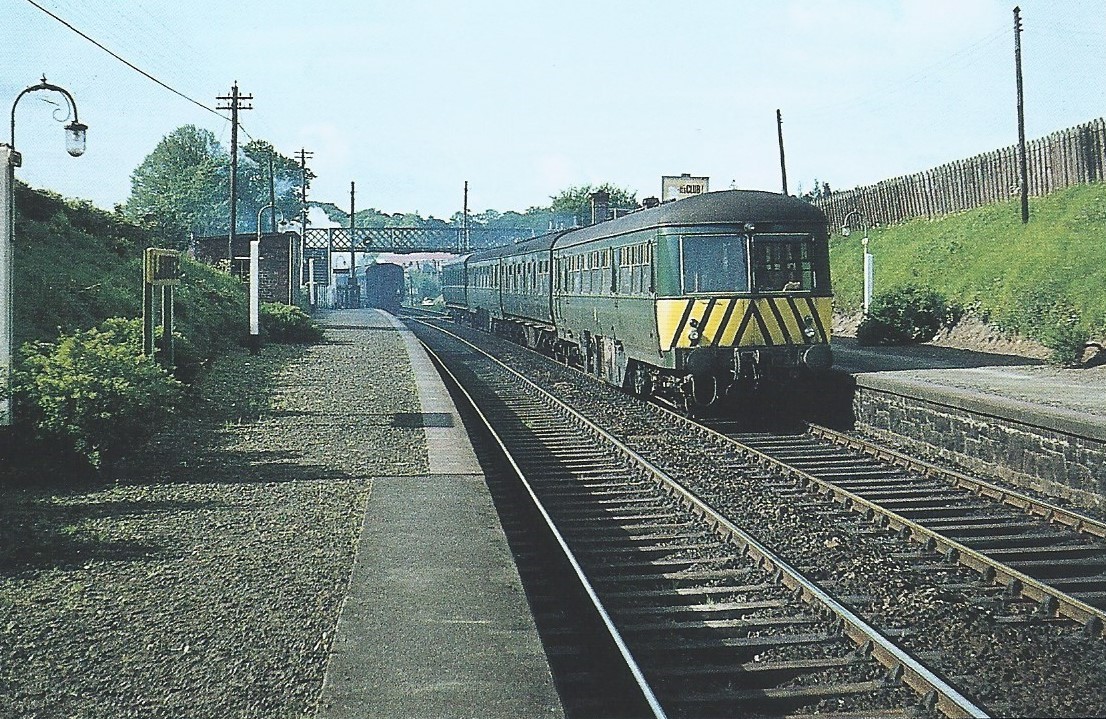
.thumb.jpg.619b7e43fcb01ddf7c110aacc1ea31d3.jpg)
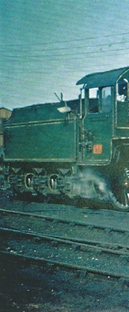

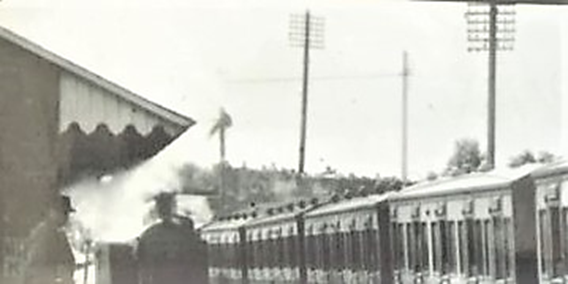





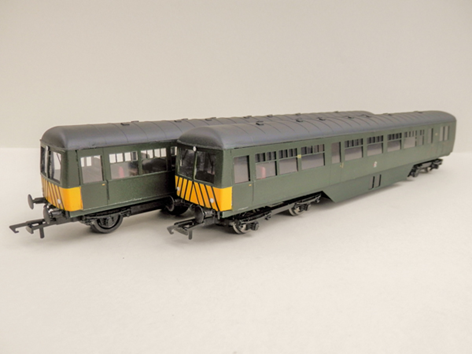
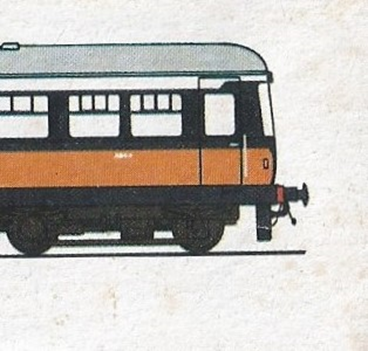
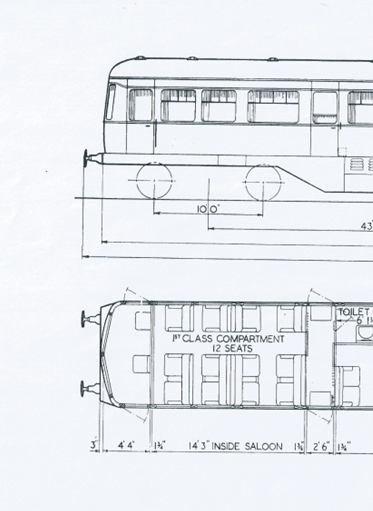
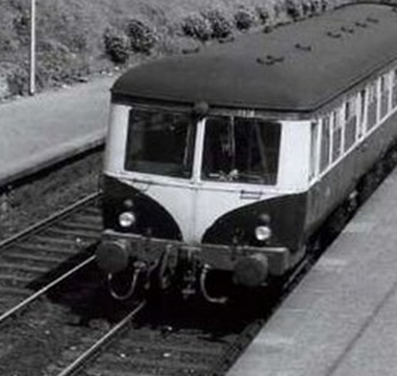
JM Design rtr GSR/Ranks Bulk Grain and Irish Standard Open Wagons
in News
Posted
Just some personal thoughts......
I am minded that in April 1973 the 'Railway Modeller' produced an article on the "Malahide" layout built by the North Dublin Model Railway Group, which featured RANKS grain wagons in one of their goods trains. Until Mayner's last post no one appears to mention if they ever appeared on GNR metals. Yet somewhere at the back of my brain I have an image of them photographed at Monanghan? Not sure why my tortured brain as this image...
While I wish the project every success I for one will not be pitching into this one........ Unless a photo of some of them going through Lisburn appears....